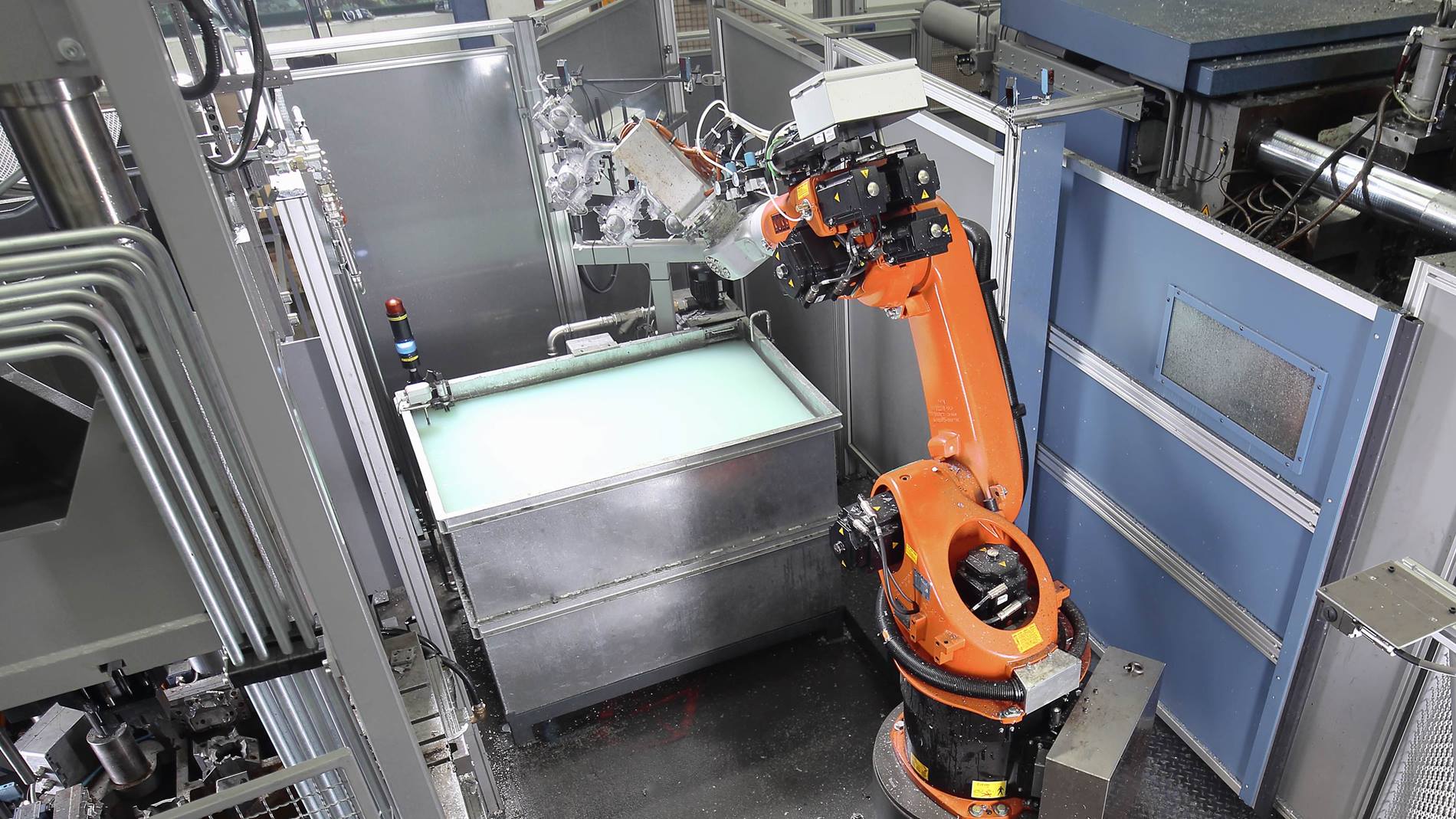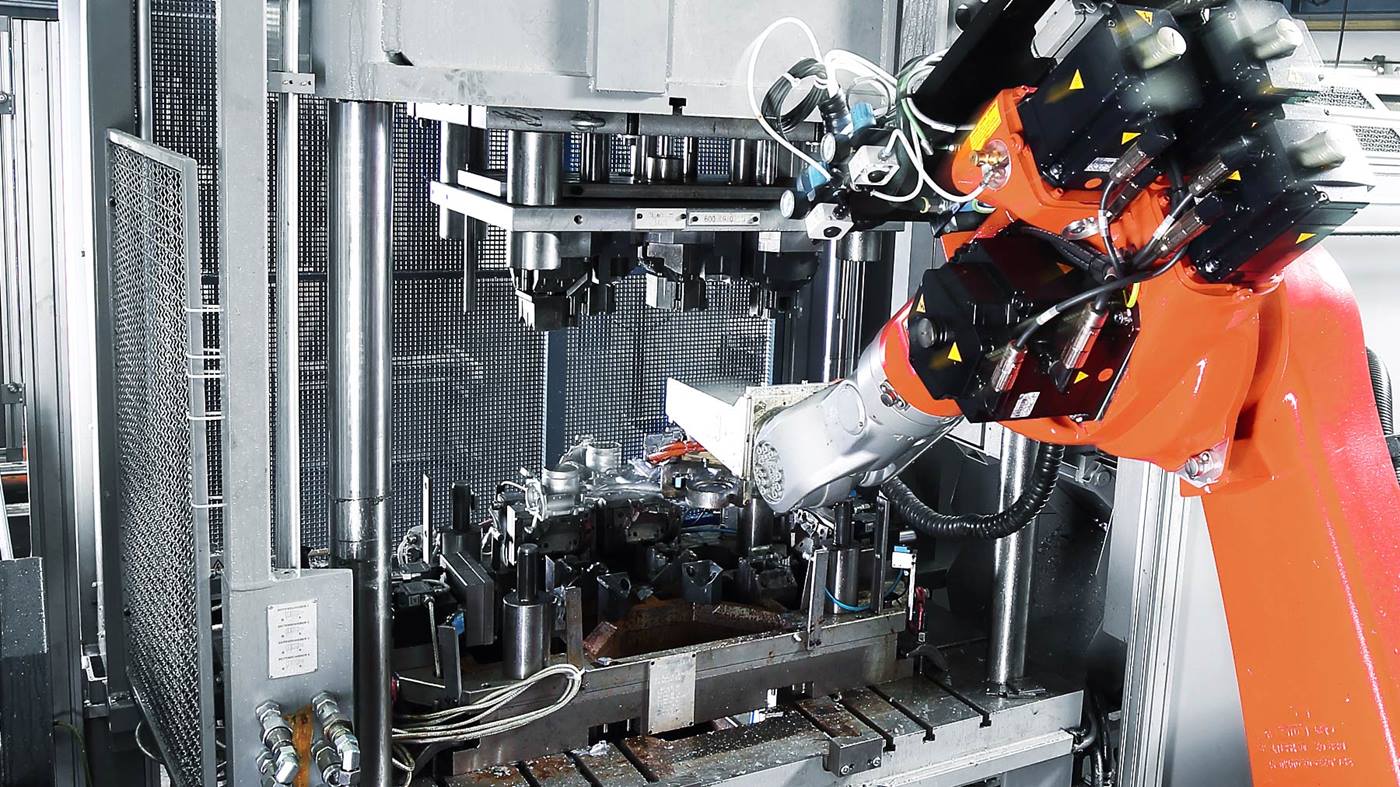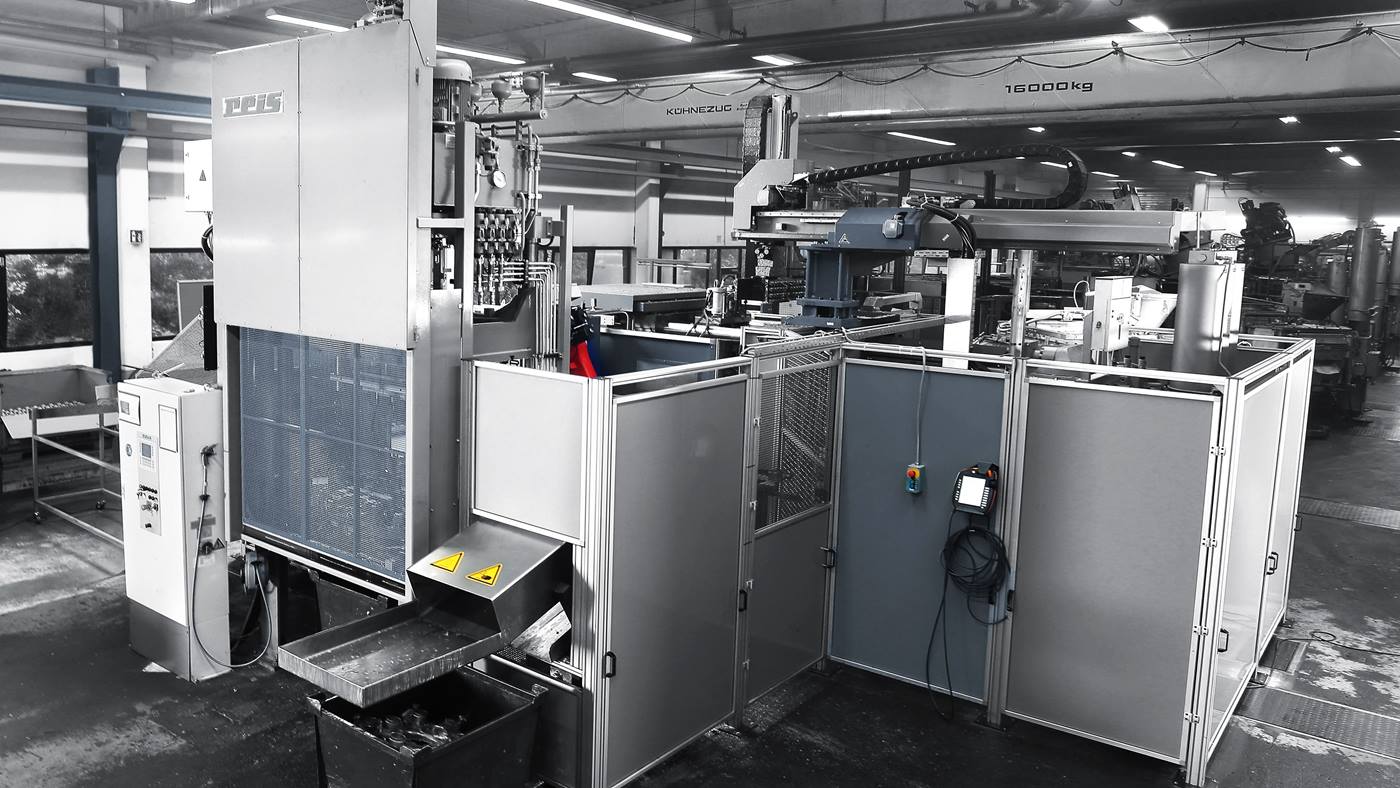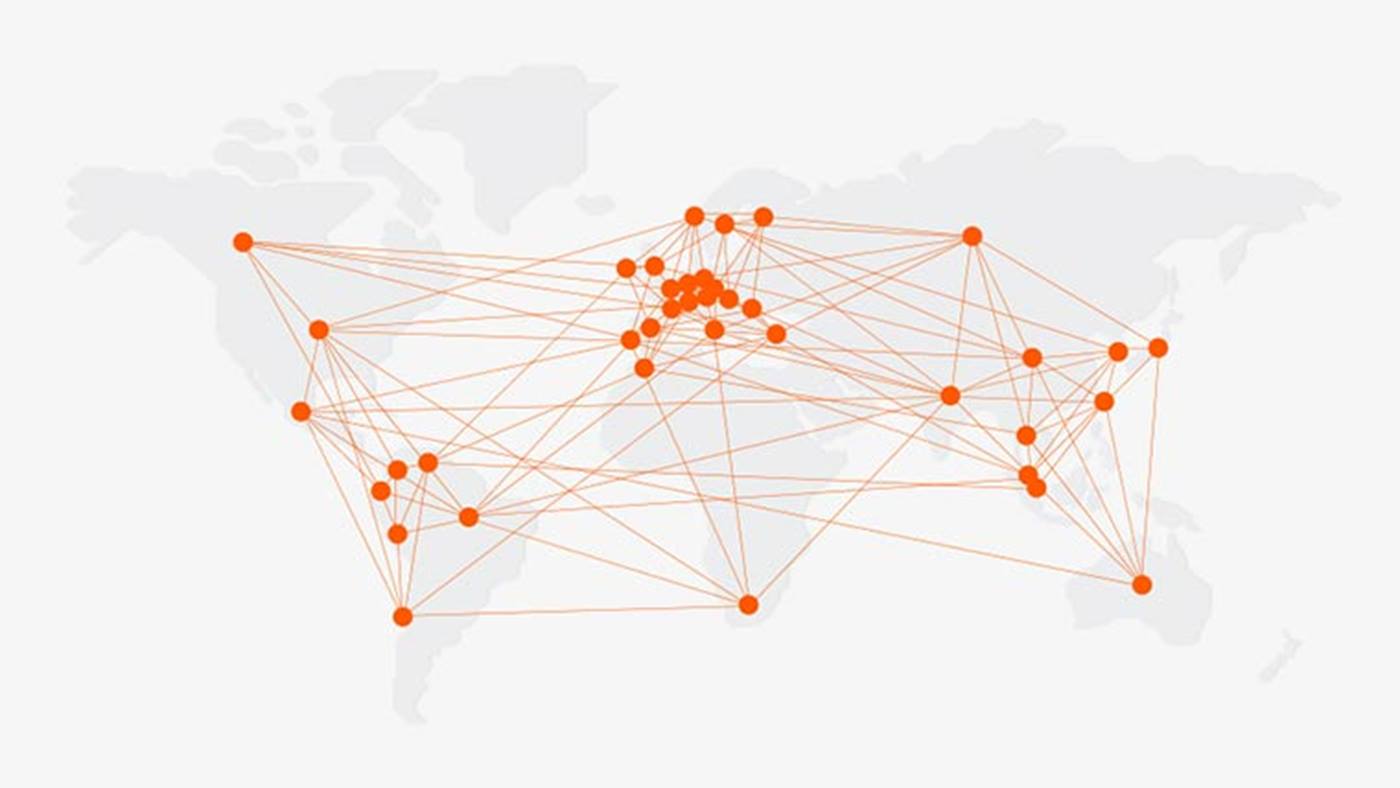
New die-casting cell for greater availability and performance
Auto Heinen has been a recognized supplier of complex die castings made of aluminum alloys for decades. In order to improve the performance of the foundry further still, a new die-casting cell for pressure die castings made of aluminum alloys was introduced in 2015, planned in full and put into operation by KUKA Industries.
The task
The cell takes care of all steps, from casting right through to the trimmed component.
The system was designed for a capacity of 200,000 shots per year in three-shift operation. The new die-casting cell produces throttle valve housings. The tooling was designed in such a way that one shot can produce four housings. In the case of aluminum die-casting companies like Auto Heinen, products are changed on a frequent basis, meaning that flexibility is high on the project’s list of requirements. The straightforward die-change procedure facilitates the manufacture of a range of products and different batch sizes when required.
The solution
A KUKA foundry robot is the central feature of the automated casting cell. It is equipped with a two-jaw rotary gripper that grasps the castings by the sprue pin and transfers them to each station in the cell without having to change its grip. Once the robot has removed the cast part from the casting machine, it stops in front of a shot inspection station that is equipped with IR sensors. Some very complex products are manufactured in the casting machine using a so-called three-plate mold. Auto Heinen has an additional double gripper at the ready to remove these products from the casting machine without damaging them. The robot then holds the complete product in an immersion cooling basin to lower its temperature to the optimum range for further processing. To carry out the next work step, the robot places the casting in the trimming tool.
The press separates the four components and removes all casting burrs in a single work step. The key benefits of these presses, which were completely redesigned in 2014, are optimized mechanical features such as larger clamping surfaces, easier access for maintenance purposes and significantly improved energy efficiency, achieved, in part, through the use of servomotor-based pump drives that also facilitate a reduction in cycle times.

Auto Heinen is part of the Scherer Group and benefits from the services available within the Group. For example, the Group produces most of its casting molds itself. Furthermore, mold filling simulations provide a virtual preview of how certain molds will behave in practice. Because Auto Heinen has a zero-defect strategy in place, each new mold also undergoes inspection in the company’s own Reis spotting press. Spotting is a fundamental quality assurance measure in the toolroom for ensuring and documenting the highest possible accuracy for each die-casting mold. The so-called “finishing touch” ensures that the mold is flush, parallel and, most importantly, that it seals tight. After all, every burr or flash reduces the quality of the casting and shortens the useful life of the mold because it is subject to increased wear.

Working with and trusting an automation partner and system integrator that brings the required expertise to the table and understands casting processes is very important to us. For 30 years, we have relied on the expertise and reliability of Reis – now known as KUKA Industries. It was clear to us at an early stage in the project that we would be putting the overall responsibility for a new, fully automated system in reliable hands.

